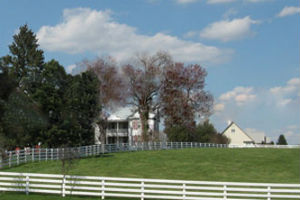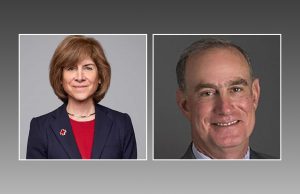Giving to charity in the United States dropped a little more than 3 percent during 2009 to $303.75 billion, a decline but not the precipitous plummet feared by nonprofits as the U.S. recession was in full bloom. As usual, donations by individuals led giving, with gifts to religion being the top category.
It’s only the second year that total giving has not increased in current dollars since Giving USA started calculating the beneficence of Americans in 1956. The other incidence was 1987. And, it was not as severe as the inflation-adjusted giving of 1974, which dropped 5.5 percent.
Giving USA , a publication of Giving USA Foundation is researched and written by the Center on Philanthropy at Indiana University. Estimates for 2009 indicate charitable giving was 2.1 percent of Gross Domestic Product (GDP), the 13 th consecutive year that giving has been greater than 2 percent.
Initial estimates for 2008 showed a decline in contributions from the previous year but revisions released with 2009 estimates indicate a slight increase due to a spike in bequests. Bequests initially were estimated at $19.7 billion but revised figures showed $28.37 billion for 2008 because of multibillion-dollar estates settled in New York and Arkansas.
There were fewer bequests to charity during 2009 than in 2008, which pushed up the 2008 numbers, originally estimated at $307.65 billion but adjusted upward to $315.08 billion. The percentage decline is from the $315.08 billion.
“In terms of shaping our society, it is significant that more adults give to charity than give to political candidates, than vote, or than are required to pay federal taxes on their income,” said Patrick Rooney, executive director of The Center on Philanthropy in Indianapolis, Ind.
“Even in a time of enormous economic upheaval, such as we saw in 2009, Americans continued to be generous to charitable causes,” said Giving USA Foundation Chair Edith Falk. “While overall giving declined, many donors — including individuals and foundations — made special efforts in 2009 to respond to greater humanitarian needs,” she said.
“Speculation was swirling for many months that charitable giving had to be down by a great percentage in 2009,” said Nancy Raybin, chair of the Giving Institute: Leading Consultants to Nonprofits. “Anecdotally, our experts across the country heard that strong giving in December made all the difference, and the totals for the year bear that assumption out.”
Of the $303.75 billion in total giving, contributions came from the following sources:
* Individuals, $227.41 billion, 75 percent
* Foundations, $38.44 billion, 13 percent
* Bequests, $23.80 billion, 8 percent
*Corporations, $14.10 billion, 4 percent
Total giving by subsector (percentages rounded upward):
* Religion, $100.95 billion, 33 percent
* Education, $40.01 billion, 13 percent
* Gifts to grant-making foundations, $31 billion, 10.1 percent
* Unallocated giving, $28.59 billion, 9.4 percent
* Human services, $27.88 billion, 9.2 percent
* Public-society benefit, $22.77 billion, 8 percent
* Health, $22.46 billion, 7 percent
* Art, culture, humanities, $12.34 billion, 4 percent
* International affairs, $8.89 billion, 3 percent
* Environment, animals, $6.15 billion, 2 percent
* Foundation grants to individuals, $3.51 billion, 1 percent
Individuals still make up three-quarters of all charitable giving in the nation and managed to remain relatively flat, only dipping by 0.4 percent, following a 2.1 percent decline in 2008. From 2007 to 2009, individual giving was down 2.4 percent.
“The last time we had a recession…we had the burst of the high-tech bubble, then Sept. 11, then a recession, so 1999 through 2001 was the great recession No. 1. But during that time real estate held up, unemployment held up more, and private businesses held up more,” said Paul Schervish, director of the Center on Wealth and Philanthropy at Boston College and a member of the Giving USA Foundation Board of Directors as well as its advisory council on methodology.
Household income on average declined during 2009, which did not happen in 2008 when it was sustained because the unemployment rate was not as high, there was unemployment compensation and other methods of combating household income declines, he said.
“Although 2009 increased with the market going up, it still didn’t reach 2007 levels so you can have large, positive change, but that doesn’t mean it should be reflected in charitable giving,” said Schervish. “Just because people have gone back to work or stocks have gained doesn’t mean that you’re out of insecurity. That’s where the level of your giving will go up,” he said.
Where it goes
Giving to religion is always the largest portion of charitable giving, accounting for 33 percent of the overall figure during 2009. But like giving by individuals, giving to religion was down slightly, about 0.7 percent.
“Some sectors reversed, giving us hope. Individual giving, when you factor in inflation, kind of held its own, which was kind of surprising,” said Elizabeth Boris, director of the Center on Nonprofits and Philanthropy at the Urban Institute in Washington, D.C.
Boris described the small decline in giving to religion as “a very realistic reflection of what’s happening” to most lower and middle-income people. “They’re giving as much as they can but not as much as before,” she said.
Religion remains a solid priority to Americans year after year, which does not come as a shock to Robert Kissane, president of Community Counseling Service Co., LLC (CCS) in New York City, because it is so engrained in their culture. Even when donations to other charities dwindle, religion still makes the cut.
“Most religious giving is done weekly on Saturdays or Sundays and at services,” said Kissane. “It’s something that Americans give to regularly. If you have 10 charities, and you want to cut it down to three, religion will still always be there,” he said.
The drop of 3.2 percent, adjusted for inflation, in overall giving “reflects the combined results of some donors increasing their giving, some holding steady, and others decreasing their contributions,” Rooney said.
While Giving USA does a better job each year of honing in charitable giving, there are still improvements that could be made, such as a better idea of how much money flows through as contributions to certain organizations. Gifts to United Ways and others in the public-societal benefit category can spread across the sector, whether funneled to human services groups or as gifts to foundations.
Perhaps breathing a relative sigh of relief, every corner of the nonprofit sector had a similar refrain on the 2009 estimates: It wasn’t nearly as bad as expected. “Based on our examination of the data as well as econometric modeling, frankly, things could have been worse overall for those who operate the charities that make up 8 percent of the total American economy,” said Falk.
A complete package of stories and analysis will be in the July 1 print edition of The NonProfit Times .












